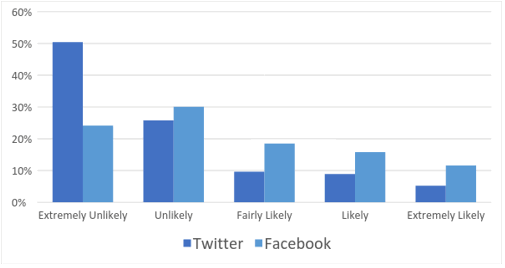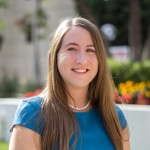
No Comments on Mobile Device Usage at an Academic Health Sciences Library: What Do They Really Want? 818
Jin Wu, MSIS
Amy Chatfield, MLS
Lynn Kysh, MLIS
Megan Rosenbloom, MLIS
Annie Thompson, MSLS
Health Sciences Libraries, University of Southern California
Many libraries are providing services via mobile devices, but there is little data regarding the adoption rate of these devices by health sciences students, and even less data regarding the use of mobile devices to access library resources. In an effort to close this research gap and shape library services, we as members of the University of Southern California Health Sciences Libraries’ Emerging Technologies Committee developed and administered a longitudinal 16-item survey to all first-year health sciences students to measure patrons’ mobile device usage habits. Six other Association of Academic Health Sciences Libraries (AAHSL) members also agreed to administer the survey to incoming students. 1
The survey covered several aspects of technology, with a focus on three areas of mobile device usage: ownership of devices/interest in future purchases, current usage of information resources and social media via mobile devices, and interest in future uses of mobile devices.1
Demographics In 2013, we surveyed 1,036 students from seven health sciences institutions with an overall response rate of 37 percent. Most of the students entering health sciences schools were millennials — 61% of respondents were aged 20 to 25, 21% were 26 to 30. Medicine, pharmacy, and dentistry students comprised the largest degree programs at all of the surveyed schools.
Device Ownership Of all the survey respondents, 83% owned a smartphone, 45% owned a tablet, and 17% owned an ebook reader. Among smartphones, the iPhone was the most popular (61%), then Android devices (31%), with other types used by fewer than 2% of respondents. Three percent of respondents were planning to get a smartphone and 4% were not interested in owning one. Among tablets, iPads (41%) were the most popular type of tablet, then Android devices (9%), followed by the rest. Of the respondents who did not own a tablet, 24% percent did not want a tablet, and 11% were planning to get one that year.
Library Interactions We asked respondents to use a 5-point scale, ranging from extremely unlikely to extremely likely, to state how likely they would be to interact with the library through specific channels while using their mobile devices.
There was clear positive response to receiving overdue notices and renewing books, but interest in texting reference services or obtaining call numbers was less positive (Figure 1).
Figure 1. Library Interactions- Texting from Mobile Devices (n=992) Source: 1
We asked whether people wanted to use certain library-licensed content on their mobile devices, using the same 5-point scale. They were interested in ebooks and extremely interested in medical apps (Figure 2).
Figure 2. Library Interactions: Licensed Resources on Mobile Devices (n=969) Source: 1
Use of Social Media We asked respondents to characterize their use of 16 sites and mobile tools using a 6-point scale. This would help us track whether specific sites were increasing or decreasing in popularity over time. Figure 3 shows three services that represented the unpopular, somewhat popular, and popular sites. One of the most unpopular tools was Twitter. We classified this as unpopular because of the high percentage of people who had never used it. Other unpopular tools, with more than 50% of people never using or never having heard of them included: Google+, LinkedIn, Tumblr, Foursquare, Second Life, Delicious/Diigo, QR Codes, Vine, Zotero, and Mendeley. Somewhat popular tools included Skype, MySpace, Instagram, and Pinterest. The most popular service was Facebook. No other site had similar usage patterns, with more than 20% of respondents using it all the time. We then asked if people would be interested in following the library on Twitter or Facebook, the two social media platforms we use at USC Health Sciences Libraries (Figure 4). Library users were not interested in interacting with the library through their personal social media.
Figure 3. Use of Social Media (Twitter n=969, Skype n= 977, FB n=996) Source: 1
Figure 4. Library Interactions: Social Media (n=954) Source: 1
Conclusion:
The rich data we’ve gathered through this technology survey can be used in several ways, by individual institutions and by examining all responses as a whole. This data can encourage:
- Alteration of library services – Based on this data, USC Health Sciences Libraries have changed our social media strategy and we allocate more time and effort to other promotional channels.
- Comparison among institutions – If an institution is considering requiring a tablet for incoming students, they can use the data to predict whether demand for apps will rise. Our data includes both schools that require student tablet ownership and those that do not.
- Examination of health sciences students as a cohort – Based on this data, students do not use social media as often as we assumed.
- Exploration of trends through the years – We plan to continue this study to gather information regarding changes over time. This kind of longitudinal data can help us determine when to end projects that have extended past their lifespan and when to embark on new ones.
We invite you to read more detailed information on the 2012 survey in the April 2014 issue of the Journal of the Medical Library Association. We are actively seeking new institutions to join us in data collection in the future. Please visit http://norris.usc.libguides.com/techsurvey to view the complete data set and get details on participation.
- Chatfield, Amy J, Hughes, Annie, Kysh, Lynn, Rosenbloom, Megan, Wu, Jin. “Mobile Device Usage at an Academic Health Sciences Library: What Do They Really Want?” Paper presented at the Medical Library Association Annual Conference, Chicago, IL, May 19, 2014.
Jin Wu, MSIS
Amy Chatfield, MLS
Lynn Kysh, MLIS
Megan Rosenbloom, MLIS
Annie Thompson, MSL











Leave a comment